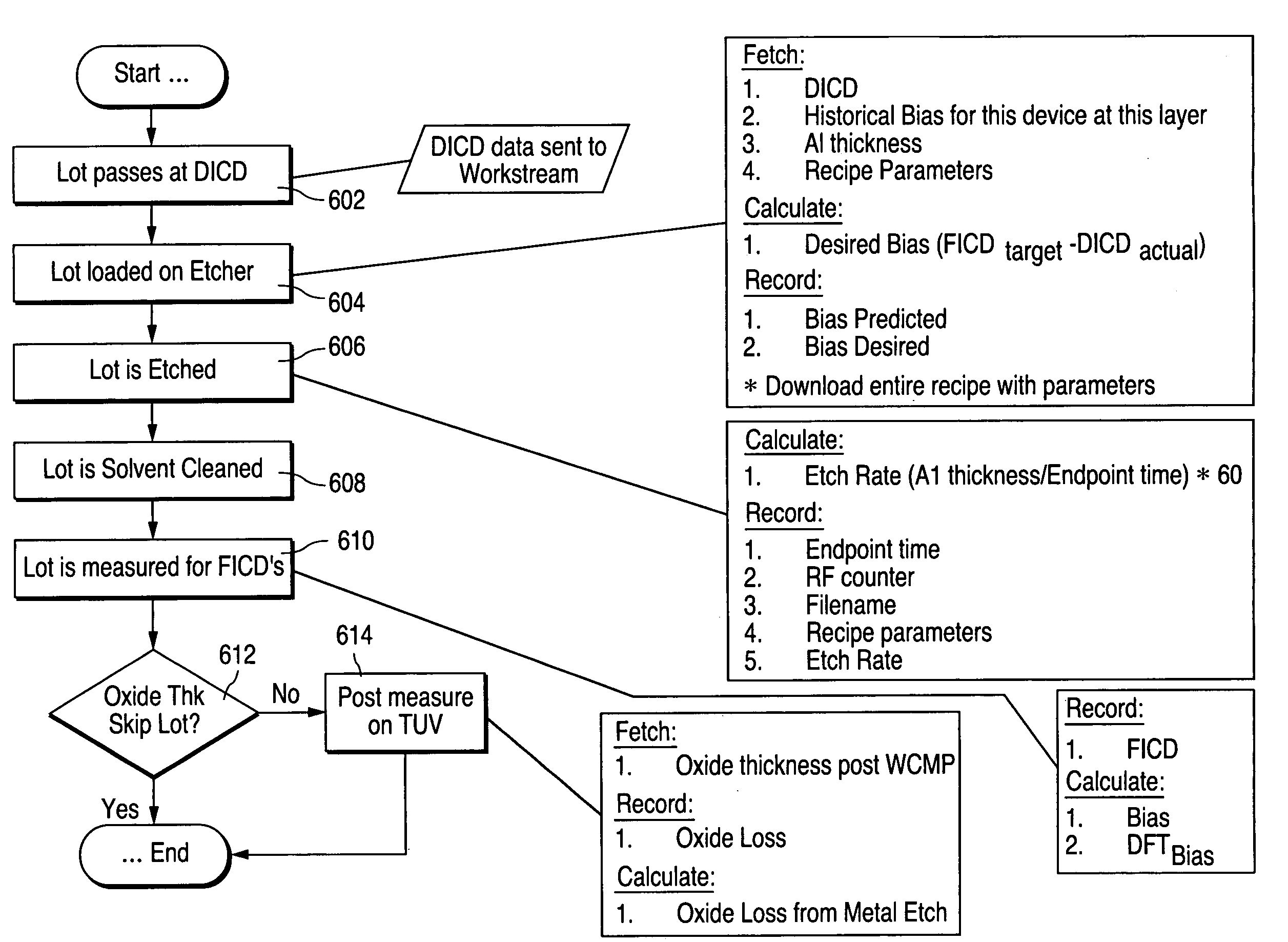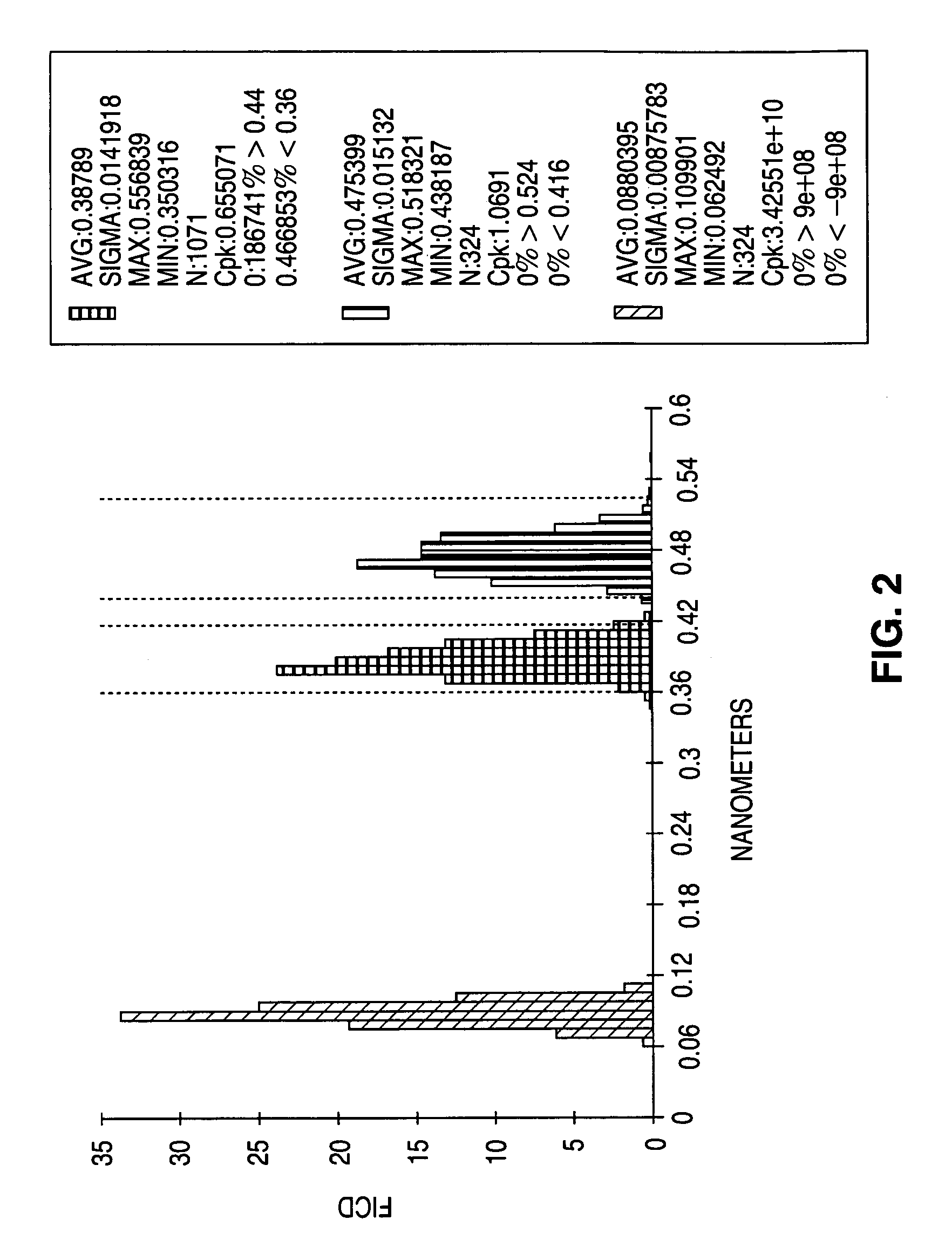Method for real time metal ETCH critical dimension control
a metal etching and critical dimension technology, applied in the direction of mechanical measuring arrangements, semiconductor/solid-state device testing/measurement, instruments, etc., can solve the problems of etch tool performance changing with time, each wafer lot etches somewhat differently, and the fabrication of semiconductor integrated circuits requires an increasingly expensive and tightly controlled process s
- Summary
- Abstract
- Description
- Claims
- Application Information
AI Technical Summary
Benefits of technology
Problems solved by technology
Method used
Image
Examples
Embodiment Construction
[0022]As discussed above, currently, metal line etch relies totally on DICD targeting to hit FIDC targets. In accordance with the present invention, bias targeting is used to provide an opportunity at the metal etch step to compensate for variability in incoming conditions such as DICD and to use the historical bias on a reticle / tool combination and the current etch tool performance to improve process control and, ultimately, Cpk and final wafer yields. That is, a method in accordance with the present invention uses subtle recipe changes to gases and / or power to move a reticle bias away from historical values to better target FIDC.
[0023]As can be seen from the FIG. 2 histogram, bias generally has a tighter distribution than DI and FI for a technology layer / combination (metal 3 in a CMOS process, in the case of FIG. 2). In this case, sigma is roughly 40% less than DI or FI. Using this predictability to account for variations in DICD, FICD can be tightened.
[0024]The FIG. 3 plot provid...
PUM
| Property | Measurement | Unit |
|---|---|---|
| thickness | aaaaa | aaaaa |
| etch rate | aaaaa | aaaaa |
| Critical Dimension | aaaaa | aaaaa |
Abstract
Description
Claims
Application Information
 Login to View More
Login to View More - R&D
- Intellectual Property
- Life Sciences
- Materials
- Tech Scout
- Unparalleled Data Quality
- Higher Quality Content
- 60% Fewer Hallucinations
Browse by: Latest US Patents, China's latest patents, Technical Efficacy Thesaurus, Application Domain, Technology Topic, Popular Technical Reports.
© 2025 PatSnap. All rights reserved.Legal|Privacy policy|Modern Slavery Act Transparency Statement|Sitemap|About US| Contact US: help@patsnap.com



